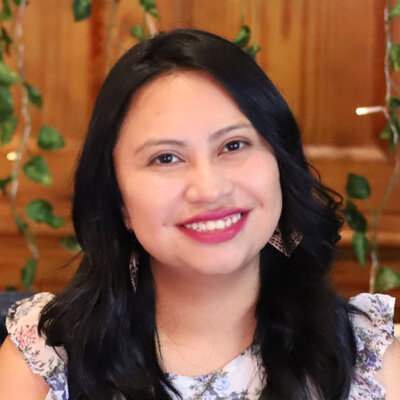How Latino Parents Found Their Voice — and Power — in Georgia
A Spanish-speaking community with no Latino representation on the school board still succeeded in winning nearly $1 million for students.

Latinos make up 10 percent of the population of Georgia, now the third largest demographic group after whites and Blacks. But their growing numbers are hardly reflected in the school boards, county commissions, and other elected bodies that matter the most to many communities because of what they control: decisions about everything from the resources students get to the location of a U.S. Immigration and Customs Enforcement facility.
A recent Brennan Center report showed the barriers that shut down Latino political power, keeping Latinos at just 0.4 percent of the state’s county commissioners and 0.2 percent of its county school board members. One of them is at-large elections, in which representatives are elected countywide rather than from districts, diluting the ability of Latino voters to elect one of their own.
This leaves some community advocates with a more daunting, but not impossible, journey to have their voices heard and demands met. It often takes more educating, more coalition building, and more research to get results, as the immigrant-led community group Migrant Equity Southeast in Savannah, Georgia, demonstrated this summer when its advocacy campaign targeting the local school board won an investment of more than $835,000 in English-as-a-second-language (ESL) programs and other services for Spanish-speaking students.
The Brennan Center talked to Daniela Rodriguez, the executive director of the organization, about the challenges of an emerging community and the strategy for victory.

You helped secure nearly $1 million for Latino students facing major disparities in academic achievement because of language barriers, from a school board with no Latino members. What roadblocks did you encounter?
One of the main issues is that the Latino community often gets undercounted. It’s difficult to have reliable data because we know that Latinos migrate, they come from different countries, they come to the United States during different times of the year. And so whatever number we have, it doesn’t do justice to the real number. In 2022 and 2023, we saw an influx of Venezuelans and Colombians, and that’s one of the reasons the school system was not prepared to work with multicultural families.
Another issue is that often government officials don’t always think of language equity at first. Like that’s never a priority.
What did you tackle first in your advocacy campaign?
We are very big on data, because if you don’t want to trust us, that’s fine, but you will have to trust the numbers. We had to present data, so we came up with a report that showed one out of every eight students in the county is Hispanic, yet the school system didn’t really provide the materials in Spanish. They only did the minimum, and we wanted to see more.
To fight for more Spanish-language resources in the schools you had to involve parents who were immigrants with day jobs and who did not speak English. How did you go about galvanizing them?
We are the only immigrant-led, Latino-led nonprofit in the area. We have a lot of bilingual people in our staff who are also part of the community. A lot of us understand what it feels like to grow up in a household with parents who don’t speak English, we understand what it means to be an ESL student. We were able to build trust in the community and to start collecting testimonies, and it was always a pattern of the school system not doing enough for both for the ESL students, but also for just Spanish-speaking parents who genuinely wanted to have better communication with the teachers to help their students.
It was also a matter of giving people a lot of education for them to understand how the system works and how there’s so many things that are not okay. You work here, you pay taxes here, this is your home. Maybe you don’t want to advocate for yourself but you have to advocate for your child, because if your child is learning English, and they get lost in the subjects, they’re going to fail. If they’re struggling in elementary school, maybe they’re going to struggle in middle school, and they will struggle in high school, and they are really going to be behind. By the time they apply for college, they won’t be fully prepared, so you need to advocate for your student now.
But how were these parents able to make their point if they themselves don’t speak English?
The school board, the superintendent, and all the decision-makers needed to hear from the community itself. We trained parents on how to testify in Spanish, and we told them, there’s going to be a translator next to you who is going to interpret for you. We also offered a stipend for transportation and childcare so they could come to the school board meeting.
They’re not voiceless; they have a lot to say. That’s one of the reasons why we were successful — we let them speak, and we gave them the tools to speak for themselves.
And you also enlisted allies from outside the Latino community to join your cause? How easy or hard was that?
We cast a wide net. In order for us to win, we received help from other organizations that also believe that access to education should be fair, regardless of where you come from or of what language you speak. We were very lucky to receive support from different allies, different education type organizations at the local level, at the state level. There were people sending letters to the school board from other parts of Georgia like Atlanta. They were like, “I don’t live in in Savannah, but what you’re doing is wrong, and you need to do better.”
We like to involve people from other places just so that the decision-making people know that if they want to ignore the community, everyone will know that you failed to listen. That is the power of social media. That is the power of digital campaigns and letter writing.
And we also make sure that our efforts are multicultural.
The support we get depends on what kind of messaging we use. For example, we have to make people understand that, if we ask you for more resources for the Latino students, it doesn’t mean that we’re asking for these resources to be taken away from the Black students. What we’re asking is for every student to have access to the resources that they need to thrive in school.
We also worked with the media to help us amplify the message. So it was different tactics that we used until the school board was like, “Okay, fine, you get almost your million dollars.”





